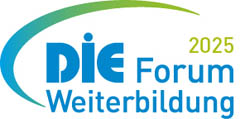Dynamic Content: Connecting Business Performance and Learning
 The Hague (NL), June 2008 - New or revised learning content should be made available immediately. By using a Learning Content Management System (LCMS) with a dynamic content delivery model managing content becomes quick and easy, allowing you to connect learning to business performance. An LCMS equips your workers with current knowledge to drive sales, improve customer service, reduce cycle times, reduce costs and improve performance in whatever role they have.
The Hague (NL), June 2008 - New or revised learning content should be made available immediately. By using a Learning Content Management System (LCMS) with a dynamic content delivery model managing content becomes quick and easy, allowing you to connect learning to business performance. An LCMS equips your workers with current knowledge to drive sales, improve customer service, reduce cycle times, reduce costs and improve performance in whatever role they have.
Dynamic content strategies, delivered through rapidly evolving LCMS technology, are revolutionary in the sphere of eLearning. LCMS vendors are simplifying the task of implementing dynamic content strategies. While there are some trade-offs in functionality and capability, the compromises respond to the constraints and needs of the eLearning, human performance technology and knowledge management markets. Dynamic content, backed up by technology and strategies that ensure rapid development and initial deployment of content, responds to the central business problems that traditionally confront the field of training. These include:
- How can we ensure that course materials are customized to different audiences so that their needs are met, and what is learned can be transferred back to the workplace?
- How do we connect people with content (not just courses, but all types of content) that can support learning and performance, and how do we do implement just-in-time strategies that can accomplish this goal?
- How can we better connect learning and performance support strategies with real gaps in performance that stand in the way of achieving business objectives?
- How can we capture knowledge rapidly and make this available more generally where and when it is needed?
Dynamic content can provide the basis for meeting all of these challenges more effectively than ever before in the history of computer-based learning and instruction. However, the technology alone cannot supply the answers. Investment in development of different components of a learning content management strategy is also required. Components of this strategy include, but are not limited to:
- taxonomy and metadata design
- high-level curriculum and learning strategy design
- work-flow and job design
- content re-use strategy definition.
Developing and implementing this strategy will require significant individual and organizational development, and a coherent change management strategy to ensure success. That said, deployment of such a strategy will be well-rewarded with reduced costs, achievement of business goals such as, for example, faster time-to-market or regulatory compliance, and improved individual, group and organizational performance.
More generally, the move to servicing the need for on-demand learning is part of a larger movement in our field that recognizes the need for mechanisms to support informal and life-long learning.
Download the whitepaper to learn more








